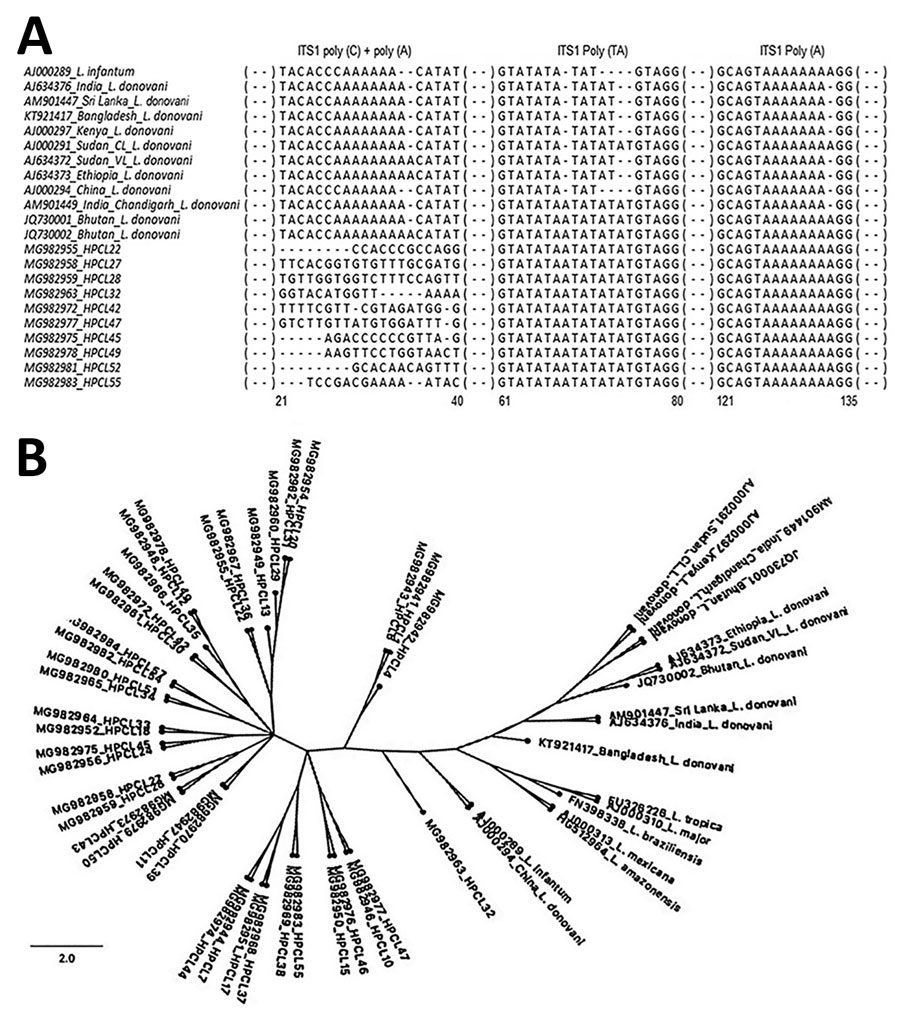Volume 26, Number 8—August 2020
Dispatch
Leishmania donovani Infection with Atypical Cutaneous Manifestations, Himachal Pradesh, India, 2014–2018
Figure 1

Figure 1. ITS1-based molecular analysis of clinical isolates from cutaneous leishmaniasis (CL) patients, Himachal Pradesh, India, 2014–2018. A) Multiple sequence alignment of ITS1 microsatellite repeat sequences of representative parasite isolates from CL patients with those of L. donovani complex reference strains from different geographic regions. Sequences were aligned by using BioEdit sequence alignment program (https://bioedit.software.informer.com/7.2). B) Phylogenetic tree of ITS1 sequences from CL test isolates (designated as HPCL, numbered in order of their collection) and standard Leishmania strains. Tree constructed by using maximum-likelihood method with 5,000 bootstraps in the dnaml program of PHYLIP package (http://evolution.genetics.washington.edu/phylip/doc/main.html). GenBank accession numbers are indicated. Scale bar indicates the nucleotide substitution per site. ITS1, internal transcribed spacer 1; RFLP, restriction fragment length polymorphism.